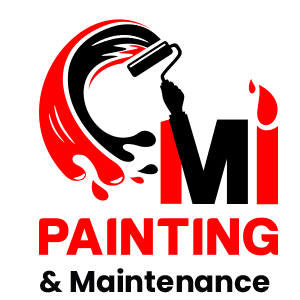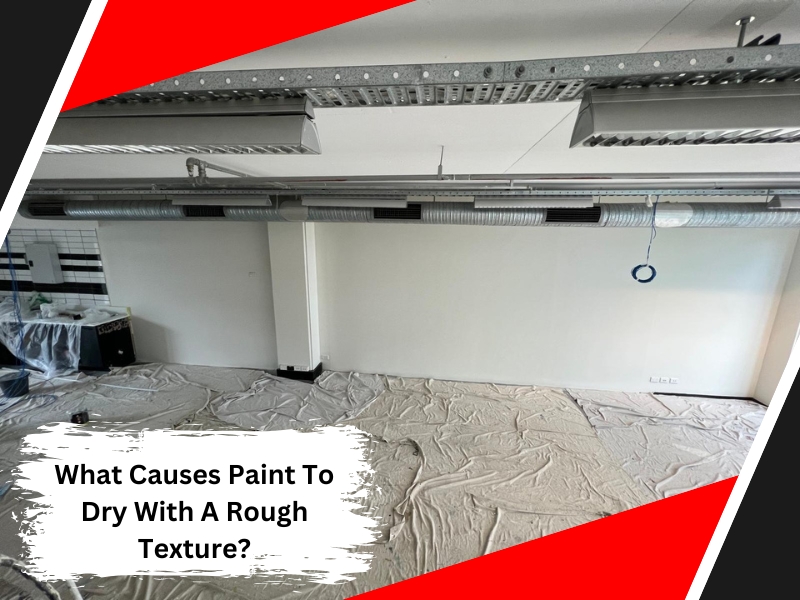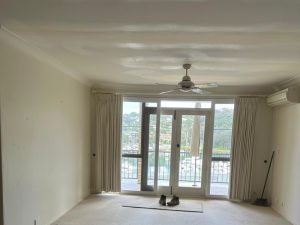When painting a surface, we all expect a smooth, even finish that reflects a job well done. However, sometimes, the paint can dry with a rough paint finish, leaving an unsatisfactory result. There are several reasons why this happens, and understanding these causes can help you avoid this common issue. This article will explore what causes paint to dry with a rough texture and how to prevent it.
What factors contribute to a rough paint finish?
Several factors, including environmental conditions and application techniques, can cause a rough paint finish. High humidity levels can cause the paint to dry too slowly, trapping air and moisture, which results in a rough texture. Extreme temperatures can also affect the drying process; if the paint dries too quickly, it might leave an uneven finish. Poor surface preparation can lead to uneven paint application, causing a bumpy or rough texture. Additionally, the type of paint used plays a role—some paints are more prone to drying with a rough finish, especially if they are not suitable for the specific surface being painted.
Can temperature and humidity contribute to a rough paint finish?
Yes, both temperature and humidity, influenced by the unique climate of Sydney, are critical environmental factors that can lead to a rough paint finish. Here’s how:
- High humidity: Paint dries slowly in high humidity, causing uneven drying and a rough texture as it sits too long in a damp environment.
- Low temperatures: Cold weather slows the drying process, resulting in a rough, uneven finish.
- Hot temperatures: Scorching weather causes paint to dry too quickly, often creating a rough texture, mainly when applied thickly.
- Ideal conditions: Moderate temperatures (10-30°C) and low to moderate humidity provide the perfect environment for smooth, even drying.
Why does an improper application technique cause a rough paint finish?
The way paint is significantly applied affects the finish. Here’s how improper application can cause rough texture:
- Too much paint: Applying thick layers without allowing each layer to dry can result in an uneven finish.
- Wrong tools: Brushes with stiff bristles or heavy-nap rollers can leave marks or streaks.
- Inconsistent strokes: Uneven strokes or pressure create streaks or ridges that dry rough.
- Overworking the paint: Reapplying too often before drying leads to an uneven surface. Use smooth strokes and let each layer dry properly.
How does using low-quality paint lead to a rough paint finish?
Not all paints are created equal. Low-quality paints are more likely to produce a rough finish due to their ingredients and consistency. Here’s how:
- Thick texture: Lower-quality paints can be dense, leading to uneven application and difficulty smoothing over large surfaces.
- Poor coverage: Cheap paints often need more layers, increasing the chances of a rough finish.
- Inconsistent drying time: Low-quality paints dry unevenly, creating an inconsistent texture.
- Less smoothness: Unlike high-quality paints, cheaper options may lack additives for a smooth
When choosing the perfect interior paint, quality matters. High-quality paint, unlike cheaper alternatives, ensures a smooth, even finish.
Why is a rough paint finish more likely during certain seasons?
Seasonal conditions can significantly impact the way paint dries, affecting the final texture. Here’s how different seasons influence the painting process:
- Spring (Sep-Nov): Moderate temperatures and lower humidity are ideal for painting, but rain can introduce moisture, slowing drying, particularly for exterior projects.
- Summer (Dec-Feb): High heat and humidity can cause paint to dry too quickly, leading to brush marks and rough textures.
- Autumn (Mar-May): Mild conditions are excellent for exterior painting, but rising moisture levels, especially with early rains, can make even drying difficult.
- Winter (Jun-Aug) is ideal for interior painting, but cold weather can slow or freeze exterior paint, causing uneven curing.
Can applying multiple layers lead to a rough paint finish?
Yes, applying too many layers of paint without sufficient drying time between each coat can result in a rough texture. Here’s why:
- Layer thickness: Applying too many coats of thick paint can prevent the surface from drying uniformly, making the texture feel rough or uneven.
- Insufficient drying time: If you allow each coat to dry thoroughly, the subsequent layers may prevent the underlying paint from shifting or forming a rough surface.
- Application order: For the best results, it’s essential to allow each layer to dry before applying the next one, especially for thicker or textured paints.
How does surface preparation impact the quality of your paint texture?
Proper surface preparation is essential for a smooth paint job. Here’s how it impacts the final result:
- Cleaning the surface: Dirt, dust, and grease can all prevent the paint from adhering correctly, leading to a rough finish. Make sure to clean the surface thoroughly before painting.
- Sanding: Sanding the surface smooth before applying paint helps create a uniform surface for the paint to settle on. Without sanding, the paint might cling to rough patches, leading to an uneven finish.
- Priming: Priming the surface before painting is essential, especially for porous materials like wood or drywall. Use different primers for painting to enhance adhesion and achieve a smoother, more consistent finish.
What are the best techniques to avoid an uneven paint texture?
If you want to avoid the frustration of a rough paint finish, consider these techniques:
- Use high-quality paint: Choose paint suited to your surface and conditions.
- Maintain ideal temperature and humidity levels: Paint when temperatures are moderate and humidity is low.
- Allow drying time: Let each coat fully dry before applying the next.
- Use the right tools: Select brushes or rollers appropriate for your paint and surface.
- Apply thin layers: Thin coats dry more evenly for a smoother finish.
- Properly prepare the surface: Clean, sand, and prime for optimal adhesion.
Achieve a flawless finish
In conclusion, achieving a smooth paint finish requires attention to detail, quality paint, and proper techniques. Control environmental factors, prepare surfaces, and apply paint carefully to avoid rough textures. For professional results, consider expert interior painting services to ensure a flawless finish. Follow these tips, and your next project will enhance your home’s interior with a stunning, even finish.
Looking for expert interior painting in Sydney? MI Painting & Maintenance offers skilled, experienced painters who transform homes and businesses with high-quality finishes. We specialise in choosing the perfect colours to enhance your space and style. Using top-notch paints and techniques, we deliver flawless, lasting results. Contact MI Painting & Maintenance today for professional, reliable painting services that exceed expectations.



